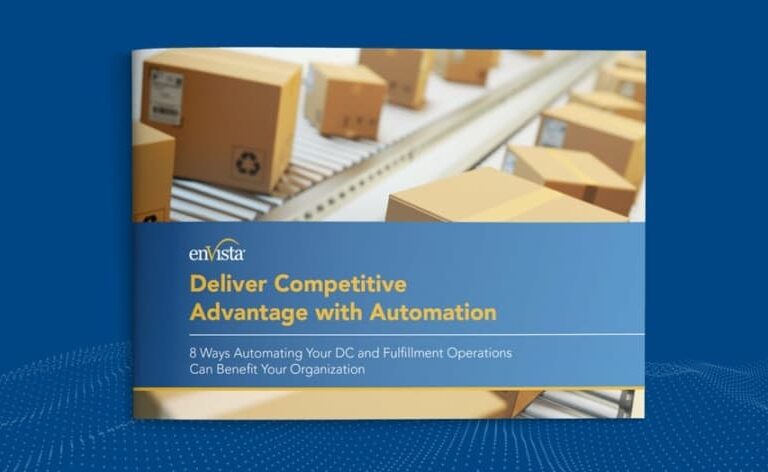With product granularisation and assortments continuing to skyrocket, customer expectations and behaviours are constantly changing. A company’s ability to meet or exceed those expectations in a cost-effective and proactive manner is critical to long-term success and customer loyalty.
Developing an end-to-end supply chain strategy combined with efficient distribution and fulfilment tactical operations is pivotal to that success. Adopting a holistic approach to your strategy that encompasses every aspect of the process, rather than solely automation, will help you stay ahead of the curve.
In this blog, we will share best practices for implementing a comprehensive supply chain strategy, addressing key factors like:
- Assortment planning
- Demand planning
- Inventory strategy and positioning
- Automation
- Data integration
- Return on investment (ROI)
Rightsizing Inventory
The consumer landscape has shifted to a “pull from anywhere”, customer-centric model, putting retailers and distributors under even more press to consistently have the right product in the right place at the right time. Inventory is the key to achieving that goal and meeting the new customer expectation.
Maximising Inventory Space
Successful distribution and fulfilment require the most efficient use of your warehouse space. Start by optimising your storage layout. Use vertical space with high shelves for slower-moving items and keep frequently picked products at waist height for easy access.
Slotting strategies to organise your inventory based on demand patterns, reducing travel time for pickers. Investing in new racking systems can help you make full use of the available space, and optimising your layout could pave the way for other improvements, such as autonomous robots for picking and packing.
Ins and Outs of Demand Forecasting
Accurate demand forecasting is like a crystal ball for your inventory management. Invest in robust demand forecasting software that considers historical data, market trends, seasonality and external factors, such as economic conditions.
AI and machine learning algorithms can process historical data quickly and accurately, improving your demand forecasting. Modern systems often support demand sensing, using real-time data to provide near-immediate feedback about changing customer demands.
Even with AI/ML in place, it’s important to regularly review and adjust your forecasts to stay responsive to changing customer demands. AI is only as valuable as the data that feeds it.
Inventory Auditing Methods for Accuracy
Inventory accuracy is your best defense against stockouts and overstock.
Conduct regular cycle counts to detect discrepancies and run full physical inventory audits periodically for additional assurance. Employing advanced auditing methods, such as ABC analysis, to classify items based on their importance enables you to allocate resources effectively.
Barcode scanning and RFID tags can help keep track of inventory and minimise discrepancies. Having an accurate idea of stock levels enables you to maintain efficient, reliable order fulfilment.
Fulfilment & Distribution Automation Technologies
Distribution centres that leverage automation tools can operate much more efficiently. Automation relieves the burden from your labour pool by handling dangerous and tedious tasks, allowing associates to spend more time on quality control and safer, more stimulating tasks.
Demand “Sensing” with Artificial Intelligence
Demand sensing takes real-time data about stock and order levels and uses it to monitor demand levels so retailers can react to seasonal changes and other shifts in consumer interests.
Artificial Intelligence can parse data in real time, and as long as that inventory data is accurate, the algorithm should generate valuable insights. By automating the demand sensing process, retailers can proactively adjust their inventory levels, ensuring they’re always prepared to meet customer demands without excess inventory.
Doing More with Warehouse Management Systems
Modern warehouse management systems (WMS) are the backbone of efficient fulfilment operations. They provide real-time visibility into your inventory, streamline order processing and optimise picking routes. They can also integrate with other key software systems, like warehouse control systems, warehouse execution systems, enterprise resource planning systems and more.
Upgrade your WMS to the latest version and integrate it seamlessly with other automation technologies to enable more advanced and efficient warehouse operations.
Inventory Management Platforms
Consider adopting inventory management platforms that offer real-time tracking, demand forecasting and intelligent reorder points. These platforms help you achieve centralised visibility across all your locations/retail channels. Having a single source of truth for inventory information makes communicating across teams and with partners easier and supports informed decision-making.
Consider adopting inventory management platforms that offer features like real-time tracking, demand forecasting and intelligent reorder points.
Automated Conveyor Belts, Sorting Systems and Autonomous Warehouse Robots
Investing in automation technologies, such as conveyor belts, sorting systems and autonomous warehouse robots, can significantly boost operational efficiency. These improvements can reduce labour costs while increasing productivity.
For example, autonomous robots are typically fast, reliable and precise, making them well-suited to jobs such as picking and packing or sorting items. Automating these processes shortens order handling time and frees up human workers for other jobs.
Wearables
Wearable technology is revolutionising the way warehouse workers operate. Smart glasses provide access to augmented reality tools for collaboration and performance tracking. Wearable scanners simplify the job of picking and packing or processing returns. More recent innovations, such as wearable exosuits, help reduce fatigue and injury risk.
Visibility & Data Integration
Using advanced analytics-driven insights and an integrated, intelligence- driven, customer-centric merchandise planning strategy will make a big difference in how you compete in the market. The following tools will enhance data integration in your warehouse.
Data Integration with ERP Platforms, Sales Systems, Carrier Profiles
Achieving complete visibility across your distribution and fulfilment operations requires seamless data integration. By integrating your ERP platform, sales systems and carrier profiles, you gain access to an accurate overview of the status of your business at all times. When all stakeholders have real-time access to critical information, they can communicate more effectively and make better-informed decisions.
Connected Devices for Visibility of Assets
Leverage the Internet of Things (IoT) to gain visibility into your assets, such as product movement, inventory status, performance metrics and process bottlenecks. RFID sensors, GPS trackers and edge computing devices can provide real-time data, helping with things like loss prevention, bottlenecks, shipment updates and route optimisation.
Performance Benchmarks to Increase Accuracy and Efficiencies
Set performance benchmarks to track your progress and drive continuous improvement. Key benchmarks include inventory accuracy rate, out-of-stock rate, carrying cost of inventory, average time to sell and order fulfilment accuracy. Regularly review these benchmarks to identify areas that need attention and optimisation.
ROI & KPIs
Good data only goes so far; it must be correctly leveraged. Make sure you are tracking the right key performance indicators to ensure your business operates at its best.
Pick and Pack Metrics
Measuring the efficiency of your pick and pack process is essential for evaluating your distribution and fulfilment operations. Consider metrics such as total picks per hour, average time per order and error rates. Track these metrics over time, being alert to trends. Optimise your processes to improve these metrics and increase productivity while reducing operational costs.
Pros and Cons of Investing in High-Tech Robotics vs. WMS vs. Cost-Effective Fulfilment Processes
While high-tech robotic systems can dramatically increase efficiency, they may require significant upfront investment and limit your ability to scale or change your workflows. You may also need to retrain your team or revise your processes to enable autonomous systems and humans to work alongside each other.
Warehouse management systems offer automation and visibility but may not cover all aspects of your operations. Consider a hybrid approach, combining technology with cost-effective fulfilment processes to achieve the best results.
KPIs to Track
Key performance indicators (KPIs) are the compass guiding your distribution and fulfilment automation journey. Focus on KPIs such as
- Inventory accuracy
- Inventory turnover
- Out-of-stock rate
- Inventory carrying cost
- Average time to sell
Establish baselines for these metrics before making changes, such as implementing automation. Review the KPIs frequently and adjust your strategy based on the results.
Conclusion
Implementing a holistic approach to automation in your distribution and fulfilment operations is the key to staying competitive in today’s market. enVista’s expert team can assist with your digital transformation and help you right-size your inventory and leverage automation technologies in your supply chain.
Our consultants can streamline your processes, reduce costs and enhance customer satisfaction. Embrace these best practices and watch your distribution and fulfilment operations thrive in the age of automation.





